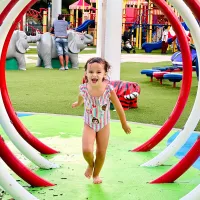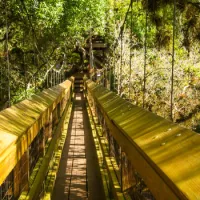Tour Sarasota’s Historic Black Community with Newtown Alive
The Newtown Alive trolley tour leaves no stone unturned in celebrating over a century of African-American history in Sarasota.
The Newtown Alive trolley tour leaves no stone unturned in celebrating over a century of African-American history in Sarasota.
When passengers load upon the Newtown Alive trolley tour they can expect to be greeted with laughter, praise & worship, and of course Vickie Oldham. Oldham, the mastermind behind Newtown Alive, is a product of the community north of downtown Sarasota, and a historian who deftly captured more than 100 years of its history into a tourist attraction. Oldham will often solicit the help of other community residents to join these tours, adding an authentic perspective about the past, present, and future for Sarasota’s oldest Black community.
15 Trolley Tour Markers
1. EARLY SETTLEMENT - 1912 North Orange Avenue
"Overtown became Sarasota’s first African American community in 1885."
At this stop trolley riders will journey into what is now known as the Rosemary District to learn about the early pioneers who came to Sarasota and built Newtown’s roots: a center of enterprise that has since shifted north of Fruitville Road.
![Leonard Reid and Sarsota’s first mayor, John Hamilton Gillespie [Photo: NewtownAlive.org]](/sites/default/files/2023-import/Marker-1.jpg)
2. MAKING A LIVING - 2500 North Orange Avenue
"When the Civil War ended in 1865, some freed people migrated to Sarasota, Manatee and Hillsborough Counties from north and central Florida, Georgia, Alabama and the Carolinas."
Learn about the human geographical implications of how and why African-Americans began to settle into Sarasota. Also learn what industries brought them here and what they did to sustain themselves, and thrive in the face of discrimination.
![[Photo: NewtownAlive.org]](/sites/default/files/2023-import/Marker%25202%2520EDITED.jpg)
3. ACTIVISTS & ELECTED OFFICIALS - 2700 Orange Avenue North
“Without activists, there would be no African American elected officials.” -Edward E. James II
"Get a glimpse of the local movers and shakers who helped open the door for many of the rights and luxuries enjoyed today by so many. Hear the story of the James v. City of Sarasota lawsuit challenging the 1965 Civil Rights Act, which ultimately led to Sarasota’s first African-American elected official - Fredd Atkins."
4. THE WRIGHT BUSH HOUSE - 1723 Dr. Martin Luther King Jr. Way
"Wright Bush… moved to Sarasota and built a single-family home on Dr. Martin Luther King Jr. Way… in 1920. Bush was an entrepreneur, owned land and sold tracts of real estate. "
The Wright Bush home, sitting on the central artery of Newtown’s Financial District, Martin Luther King Jr. Blvd, is the oldest known structure still standing in the community today.
5. BUSTLING BUSINESS DISTRICT (1) - 1742 Dr. Martin Luther King Jr. Way
"'Make a way, find a way' was the mantra of Newtown strivers who worked long hours, exerting their bodies to exhaustion to provide for their families. "
Gain further insight into the businesses and individuals who helped power a self-sustaining economy that largely operated separate from the rest of Sarasota due to segregation. Hear stories of early Newtown business owners like Neil Humphrey with his grocery store and pharmacy, and Jack and Mary Emma Jones who ran a a restaurant and taxi service.
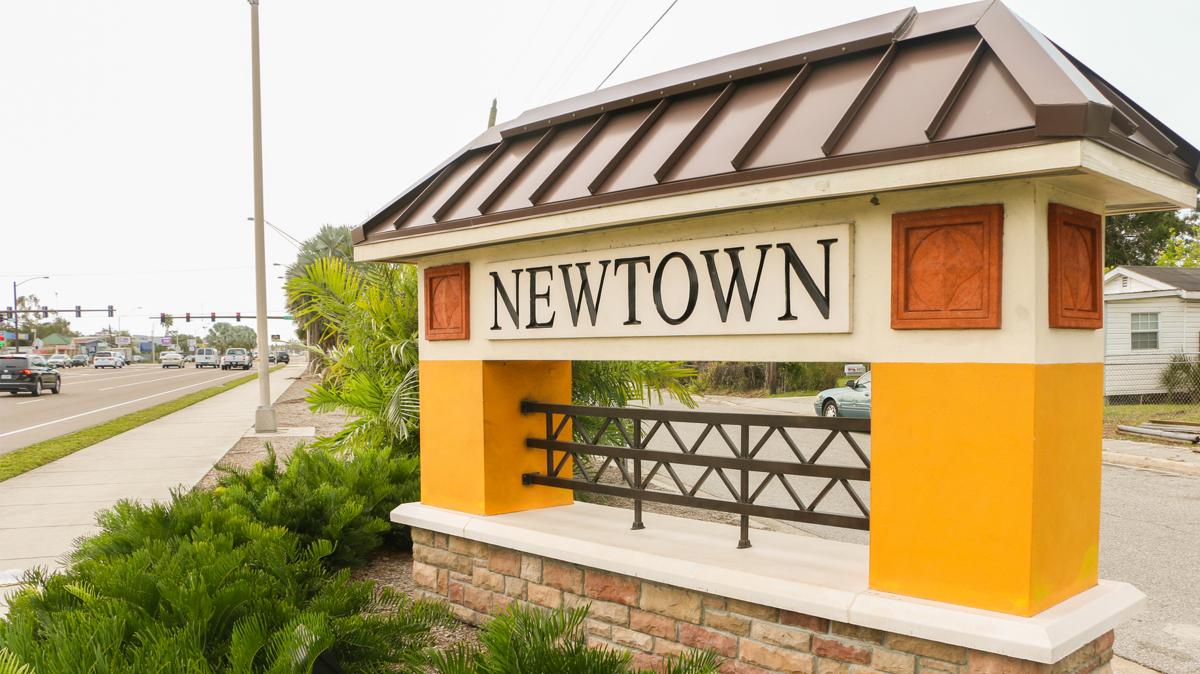
6. NEWTOWN REDEVELOPMENT - 1782 Dr. Martin Luther King Jr. Way
"Newtown’s revitalization and redevelopment requires more than streetscapes and beautification. The physical solutions must be combined with social and economic changes in order for the community to survive."
Get a glimpse of what is on the horizon for Newtown, an area that has perservered blights beyond just discrimination.
7. SEGREGATION, DESEGREGATION & INTEGRATION - 2730 Links Avenue
"Race relations deteriorated [in Florida] as African Americans were run out of town, punished more severely for crimes, assaulted without reason, denied voting rights and stripped of any land they owned. "
Hear the stories of the harsh realities of discrimination endured by individuals in Sarasota County simply looking for an equal opportunity at life. Stories like the mysterious passing of Sarasota’s first Black physician, Dr. John Chenault, and his wife.
![Dr. John Chenault [Photo: NewtownAlive.org]](/sites/default/files/2023-import/Dr.%2520John%2520Chenault%2520EDITED-3.jpg)
8. CHURCH ARCHITECTURE - 2504 Gillespie Avenue, Epstein Addition to Newtown
"Places of worship have always been an important aspect of life in Newtown and one of the best locations to gauge the heartbeat of the community."
Learn about the heartbeat of the community - the Black church – operating as the lifeline of the community for years. To this day, Newtown has more churches per capita than any area in Sarasota.
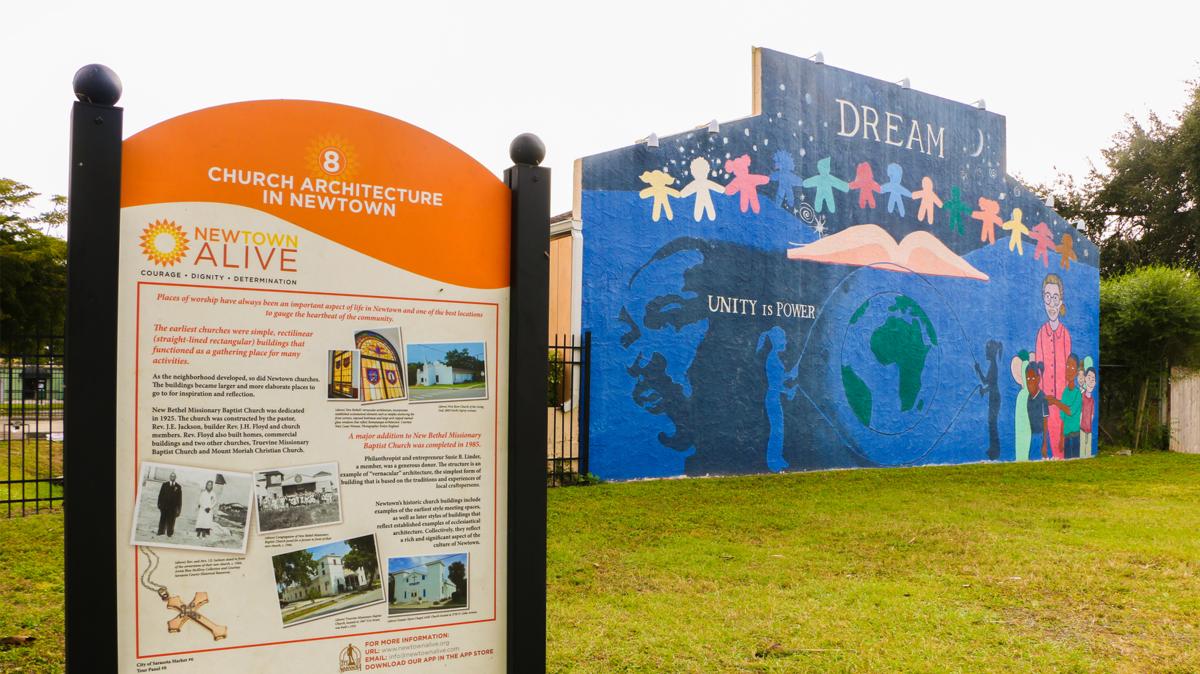
9. BUSTLING BUSINESS DISTRICT (2) - 2431 Washington Court
"Shops along the main thoroughfare in Newtown helped residents survive segregation by providing the necessities when Sarasota shops were off-limits."
Riders will hear about the businesses today that seek to drive economic prosperity in the neighborhood. Some, like Jetson’s Salon, have been around for more than 40 years.
10. HISTORICAL ARCHITECTURE - 3014 Dixie Avenue, Newtown Heights
"Most of the historic buildings in Newtown can be described as 'vernacular' architecture… based on the traditions and experiences of local craftspersons whose works meets the community’s needs using locally sourced materials."
Take an opportunity here to admire the unique charm of the building structures in the small, historic neighborhood.
11. MILITARY SERVICE - 1845 34th Street, Newtown Park, City of Sarasota
"Enlisting in the United States Military and swearing to protect the rights of all Americans is a high calling that requires sacrifice."
Many Newtown locals served or died for American freedom. Like many communities in the country, this didn’t protect them from prejudice upon returning home. Hear many of their stories at this stop.
![Caption: Michael Campell was the first Vietnam War casualty from Newtown [Photo: NewtownAlive.org]](/sites/default/files/2023-import/Michael%2520Cam%2520EDITED.jpg)
12. EDUCATION - 3400 North Orange Avenue
"Education was a cherished possession of free African Americans denied the privilege of reading and writing by slave owners."
At this stop folks will learn of the story of Emma E. Booker of whom today’s Booker Schools are named. Also learn about the forced integration in the late 60’s and much more.
![Members of Booker High School’s first graduating class [Photo: NewtownAlive.org]](/sites/default/files/2023-import/Booker-2.jpg)
13. MEDICAL HISTORY - 1775 Dr. Martin Luther King Jr. Way
"For almost a third of Newtown’s 100 year history… the African American community supplied most of their own medical care, using cobwebs, cotton balls, turpentine and castor oil as internal and external cure-alls. Churches and revivals provided spiritual healing."
Learn about the unique ways in which African-Americans cared for themselves and communities often times in with limited resources, but abundant ingenuity.
14. ORGANIZATIONS - Maple Avenue, Newtown, Bethel Christian Methodist Episcopal Church.
"After the Civil War ended slavery in the south, segregationist policies and Jim Crow laws still prevented access to healthcare, education and social services for African-Americans."
Civic engagement has been a powering tool used to sustain the integrity and spirit of the community. At this stop people will learn about organizations like the NAACP and Women’s Club that helped community residents stay engaged and politically active.
![[Photo: NewtownAlive.org]](/sites/default/files/2023-import/Marker%252014%2520EDITED.jpg)
15. AFRICAN AMERICAN CHURCHES - 1680 18th Street
"The Newtown and Overtown communities were built on strong religious foundations."
Here, folks will see and feel the oldest Black church in Sarasota built in the late 1800’s. Many of the early congregants were freed slaves or children of slaves.
![[Photo: NewtownAlive.org]](/sites/default/files/2023-import/New%2520Bethel%2520EDITED.jpg)
***
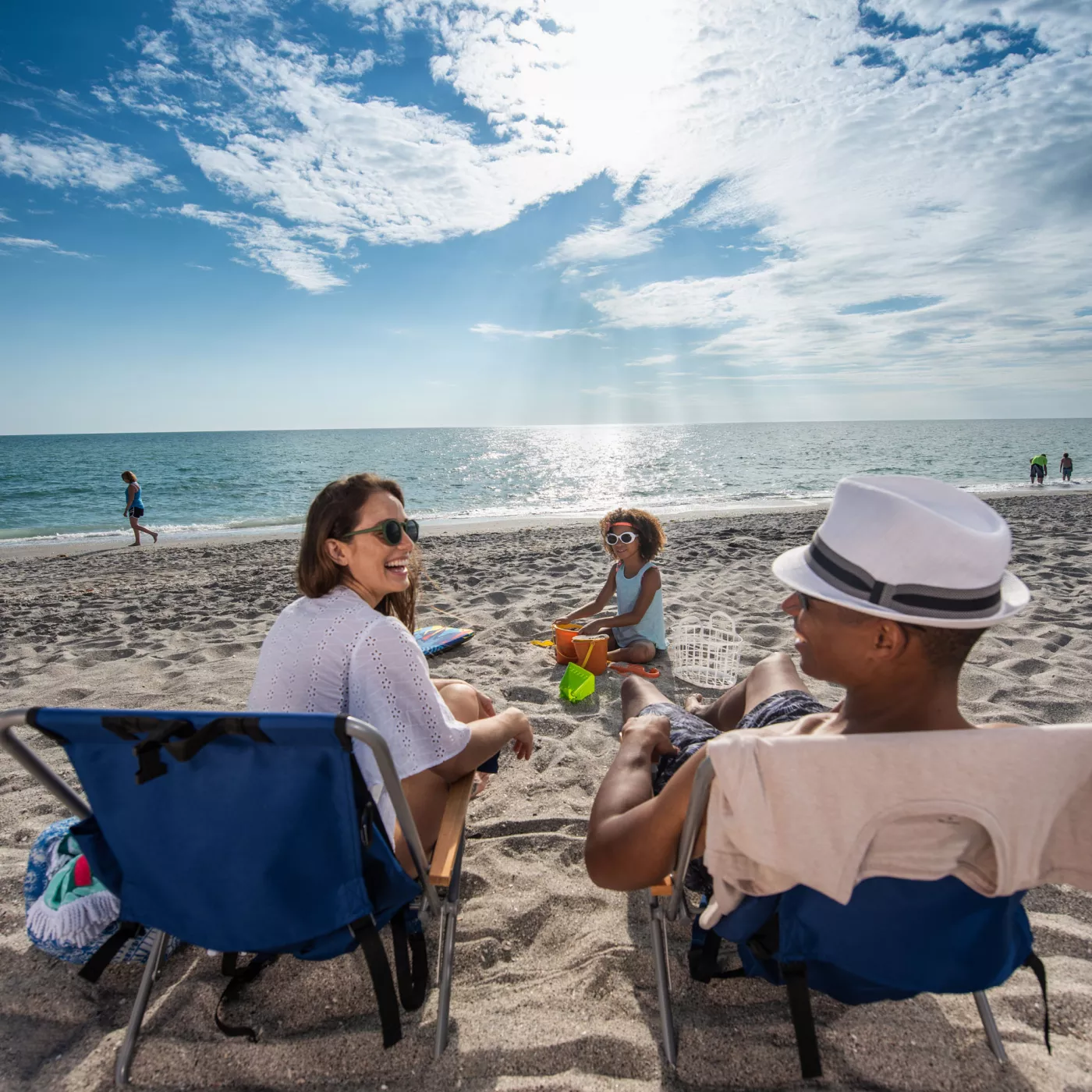
![Boat parking at The Crow’s Nest in Venice [Photo: Lauren Jackson]](/sites/default/files/styles/popular_stories_teaser/public/2023-import/The-Crow%2527s-Nest-cropped__OPT.jpg.webp?itok=ycs37M-O)
